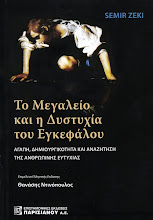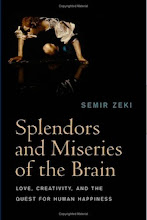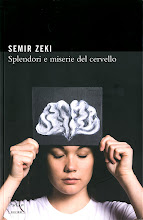I am a regular visitor to art galleries, and am increasingly appalled by the trash that curators and museum directors stuff into their galleries and pass off as art. But nothing could have prepared me for an exhibition of graduate students at a famous art college in London. The trash exhibited there – and presumably approved of by the teachers of that venerable institution – was shocking beyond all brief description.
Marcel Duchamp sneered at the art world when he sent a urinal as an exhibit at an art show, and then again with his readymades and yet again when he launched his slogan “art without an artist”. Duchamp was a cynic but a highly intelligent man. I wonder what his attitude would have been had he lived long enough to see that he has, with his statements and actions, licensed not only museum directors and curators to purvey their rubbish, but worst of all, to have licensed teachers at art colleges – including professors – to abdicate all responsibility towards their students, from whom they now demand increasingly large sums. What he seems to have provided some sections of the art world is a recipe for suspending thought. For there was nothing in the collection of bric à brac exhibited to suggest that the students exhibiting had had any formal tuition in anything remotely related to art, save the notion that anything can be called art provided it is exhibited in the relevant artistic setting. Nor did any exhibit suggest that there had been thought behind it. There was not a single item in that lamentable exhibition that I wanted to contemplate or look at after the first glance, or to think about, or to delight in. Instead, the usual collection of stones, of cardboards with illegible scribbles, and on and on. Truly shocking.
I argued in my book Inner Vision that one of the many functions of art is the acquisition of knowledge. In fact, I would argue that this is a very important function of art. But what kind of knowledge does one get from this accumulation of trash? None at all as far as I can see.
Perhaps the only value of this disgraceful exhibition is that it may spur some to start questioning whether we have not gone far enough with this license we have given to the art world and its conceits. When the rot really sets in, that is, when artists who are also teachers by trade, abdicate their responsibility towards the students out of whom they make a living, by encouraging thoughtlessness and by encouraging the notion that anything can pass as art, then the time has come to pension them off so that they can live by their art alone and replace them with those who have a more responsible attitude towards what they profess to teach.
It is regrettable that art, being largely in the subjective arena, is not as open to assessment as science or as other subjects in the humanities, such as English or history. Had it been, and had there been assessors (as there are in science), the ratings given to institutions such as the one I visited would be very low and they would soon lose their government subsidies. Perhaps one good outcome of neurobiology is that it may soon give an objective measure of just how much pleasure this kind of trash gives, and force those who live by teaching art to think a little more and perhaps to communicate some of their thinking to students.
Sunday, June 19, 2011
So neuroeconomics tells us what I have been arguing for a long time...
There is an interesting article in The Guardian today, which goes some way to support what I have been arguing for a long time on this site -- that we should have many more women in top economic positions than we actually do now, at least in Britain. It is good to know that Iceland called in women to clear the economic mess left by men, and that Norway has slapped a mandatory 40% women on financial boards. As I have stated here before, if I were Prime Minister I would pass legislation to ensure that the Chancellor of the Exchequer (Finance Minister) should always be a woman.
Neurobiology may yet be listened to by those running our affairs, and may yet come to have a very beneficial effect on society.
Neurobiology may yet be listened to by those running our affairs, and may yet come to have a very beneficial effect on society.
Saturday, June 4, 2011
A great but empty exhibition at the Uffizi in Florence
Currently, waiting time to enter the Uffizi Museum in Florence is, at a minimum, 2 hours, unless of course you get there first thing in the morning. But right across the main entrance to the Museum is another exhibition, in another wing of the Uffizi, which you can enter without waiting. Once you get inside, it is empty, thus giving you time to contemplate the great works on display at leisure. It is specatcular and contains great drawings by some of the great Italian masters - Leonardo, Michelangelo, Raffaelo, Perugino and others. The exhibition was at the British Museum before going to Italy, and contains masterpieces from both museums. Entry to the exhibition is free, while you have to pay 11 € to enter the main gallery.
An authority explained that the emptiness of the exhibition of drawings at the Uffizi can be accounted for by the fact that the entrance is free. Therefore, it could not be worth much, at least in the estimation of the average person.
Some art curators and historians insist on the fact that one must view an art work in its totality - that is, the context, its commercial value, and so on. How right they are, and what an apt joke Marcel Duchamp played on the art world by sending a urinal to an art exhibition as a serious exhibit. The urinal became a work of art, instantly, because it was now in a new context and, significantly, in the context of an art exhibition.
Hence the necessity for separating art from beauty, which neuroesthetics should do.
And hence the necessity for the "reductionism" that many are so vehemently against. For we should isolate perceived beauty and study its neural correlates, just as we should isolate the other factors such as the commercial value and context and study their neural correlates.
Meanwhile, the magnificent exhibition at the Uffizi is a living testament (at least until it closes later this month) to the true, but sad, opinion of many in the art world - that when discussing a work of art one should do so in context, and above all in its commercial and monetary context.
An authority explained that the emptiness of the exhibition of drawings at the Uffizi can be accounted for by the fact that the entrance is free. Therefore, it could not be worth much, at least in the estimation of the average person.
Some art curators and historians insist on the fact that one must view an art work in its totality - that is, the context, its commercial value, and so on. How right they are, and what an apt joke Marcel Duchamp played on the art world by sending a urinal to an art exhibition as a serious exhibit. The urinal became a work of art, instantly, because it was now in a new context and, significantly, in the context of an art exhibition.
Hence the necessity for separating art from beauty, which neuroesthetics should do.
And hence the necessity for the "reductionism" that many are so vehemently against. For we should isolate perceived beauty and study its neural correlates, just as we should isolate the other factors such as the commercial value and context and study their neural correlates.
Meanwhile, the magnificent exhibition at the Uffizi is a living testament (at least until it closes later this month) to the true, but sad, opinion of many in the art world - that when discussing a work of art one should do so in context, and above all in its commercial and monetary context.
Subscribe to:
Posts (Atom)









 Contact us
Contact us